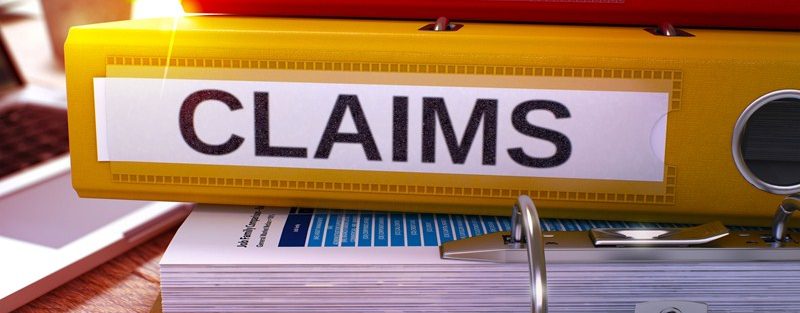The gift aid scheme, which was originally introduced in 1990, allows charities to reclaim from HMRC the basic rate of Income Tax deducted from qualifying donations by UK taxpayers. This means that where a basic rate taxpayer claims gift aid on a £100 donation, the charity can reclaim from HMRC the £25 of tax paid on that donation.
If you are a higher rate or additional rate Income Tax payer you can also claim additional tax relief on the difference between the basic rate and your highest rate of tax.
For example:
If you donated £5,000 to charity, the total value of the donation to the charity is £6,250. You can claim back additional tax back of:
- £1,250 if you pay tax at the higher rate of 40% (£6,250 × 20%),
- £1,562.50 if you pay tax at the additional rate of 45% (£6,250 × 25%).
Taxpayers also have the option to carry back their charitable donations to the previous tax year. A request to carry back the donation must be made before or at the same time as your previous year’s Self-Assessment return is completed.
This means that if you made a gift to charity in the current 2023-24 tax year that ends on 5 April 2024, you can accelerate repayment of any tax associated with your charitable giving by carrying back the donation to the previous tax year, 2022-23. This can be a useful strategy to maximise tax relief if you will not be paying higher rate tax in the current tax year but did so in the previous tax year. This should be done as part of the Self-Assessment tax return for 2022-23 which must be submitted by 31 January 2024.
You can only claim if your donations qualify for gift aid. This means that your donations from both tax years together must not be more than 4 times what you paid in tax in the previous year.
Tax relief when you donate to a charity
1. Overview
Donations by individuals to charity or to community amateur sports clubs (CASCs) are tax free. This is called tax relief.
The tax goes to you or the charity. How this works depends on whether you donate:
- through Gift Aid
- straight from your wages or pension through a Payroll Giving scheme
- land, property or shares
- in your will
This also applies to sole traders and partnerships. There are different rules for limited companies.
If you want to donate to a sports club, check if it’s registered as a community amateur sports club (CASC). You cannot donate to a CASC through Payroll Giving.
Keeping records
You’ll need to keep a record of your donations if you want to take them off your total taxable income.
2. Gift Aid
Donating through Gift Aid means charities and community amateur sports clubs (CASCs) can claim an extra 25p for every £1 you give. It will not cost you any extra.
Charities can claim Gift Aid on most donations, but some payments do not qualify.
What you need to do
You need to make a Gift Aid declaration for the charity to claim. The charity or CASC will give you a form to sign. They must also have an HMRC charity reference number – ask the charity or CASC if you’re not sure.
You must give a declaration to each charity you want to donate to through Gift Aid.
You can include all donations from the last 4 years. Tell the charity about any tax years where you did not pay enough tax.
If the charity or CASC gets back more tax than you’ve paid, HMRC may ask you to pay more tax to cover the difference.
Paying enough tax to qualify for Gift Aid
Your donations will qualify as long as they’re not more than 4 times what you have paid in tax in that tax year (6 April to 5 April).
The tax could have been paid on your income or capital gains.
You must tell the charities you support if you stop paying enough tax.
If you donate through Payroll Giving
If your employer or pension provider offers a Payroll Giving scheme, any donations you give through the scheme will be taken before Income Tax is taken off.
You’ll still pay National Insurance contributions on the amount of your donation. But you will not pay any Income Tax on the amount you donate.
If you’re a higher-rate taxpayer
You can claim back the difference between the tax you’ve paid on the donation and what the charity got back when you fill in your Self Assessment tax return. It’s the same if you live in Scotland. Do this either:
- through your Self Assessment tax return
- by contacting HM Revenue and Customs (HMRC) and asking them to amend your tax code
Example
You donate £100 to charity – they claim Gift Aid to make your donation £125. You pay 40% tax so you can personally claim back £25.00 (£125 x 20%).
With Payroll Giving, you do not pay the difference between the higher and basic rate of tax on your donation.
Getting tax relief sooner
In your Self Assessment tax return, you normally only report things from the previous tax year.
But for Gift Aid, you can also claim tax relief on donations you make in the current tax year (up to the date you send your return) if you either:
- want tax relief sooner
- will not pay higher rate tax in current year, but you did in the previous year
You cannot do this if:
- you miss the deadline for your Self Assessment tax return (31 January if you file online) (31 January if you file online)
- your donations do not qualify for Gift Aid – your donations from both tax years together must not be more than 4 times what you paid in tax in the previous year
If you do not have to send a tax return, contact HMRC and ask for a P810 form. You’ll need to submit it by 31 January after the end of the previous tax year.
If you get Married Couple’s Allowance
Your tax-free allowance may increase if you make donations through Gift Aid and claim Married Couple’s Allowance.
If you fill in a Self Assessment tax return, your allowance will be adjusted automatically if it needs to be.
If you do not, contact HMRC to tell them about your charity donations.
3. Donating straight from your wages or pension
If your employer, company or personal pension provider runs a Payroll Giving scheme, you can donate straight from your wages or pension. This happens before tax is deducted from your income.
Ask your employer or pension provider if they run a Payroll Giving scheme.
You cannot donate to a community amateur sports club (CASC) through Payroll Giving.
The tax relief you get depends on the rate of tax you pay. To donate £1, you pay:
- 80p if you’re a basic rate taxpayer
- 60p if you’re a higher rate taxpayer
- 55p if you’re an additional rate taxpayer
The tax relief you get is different if you live in Scotland. To donate £1, you pay:
- 81p if you’re a starter rate taxpayer
- 80p if you’re a basic rate taxpayer
- 79p if you’re a intermediate rate taxpayer
- 59p if you’re a higher rate taxpayer
- 54p if you’re a top rate taxpayer
4. Donating land, property or shares
You do not have to pay tax on land, property or shares you donate to charity. This includes selling them for less than their market value.
You get tax relief on both:
- Income Tax
- Capital Gains Tax
You cannot get Income Tax relief on donations to community amateur sports clubs (CASCs).
You must keep records of the donation to show that you’ve made the gift or sale and that the charity has accepted it.
Income Tax relief
You can pay less Income Tax by deducting the value of your donation from your total taxable income. Do this for the tax year (6 April to 5 April) in which you made the gift or sale to charity.
How to claim
If you complete a Self Assessment tax return, add the amount you’re claiming in the ‘Charitable giving’ section of the form. This will reduce your Self Assessment bill.
If you do not complete a tax return, contact HMRC with details of the gift or sale and your tax relief amount. You’ll either get a refund, or your tax code will be changed so you pay less Income Tax for that tax year.
Capital Gains Tax relief
You do not have to pay Capital Gains Tax on land, property or shares you give to charity.
You may have to pay if you sell them for more than they cost you but less than their market value. Work out your gain using the amount the charity actually pays you, rather than the value of the asset.
Selling land, property or shares on behalf of a charity
When you offer a gift of land, property or shares, the charity may ask you to sell the gift on its behalf.
You can do this and still claim tax relief for the donation, but you must keep records of the gift and the charity’s request. Without them, you might have to pay Capital Gains Tax.
5. Leaving gifts to charity in your will
Your will says what will happen to your money, property and possessions after you die.
Your donation will either:
- be taken off the value of your estate before Inheritance Tax is calculated
- reduce your Inheritance Tax rate, if 10% or more of your estate is left to charity
You can donate:
- a fixed amount
- an item
- what’s left after other gifts have been given out
Writing your will
Find out how to write or update your will, including how to make sure it’s legal.
Include the charity’s full name – check with them or:
- search the charity register in England and Wales
- search the charity register in Scotland
- search the charity register in Northern Ireland
6. Keeping records
You need to keep records of donations if you want to claim tax back on them.
Gift Aid donations
Keep records if you:
- pay higher rate tax
- claim tax credits
- get a higher Personal Allowance because of your age
- get Married Couple’s Allowance
If you’re claiming tax back through your Self Assessment tax return or by asking HM Revenue & Customs (HMRC) to amend your tax code keep records showing the date, the amount and which charities you’ve donated to.
Land, buildings and shares
For donations of land, property or shares you need to keep:
- legal documents showing the sale or transfer to charity
- any documents from a charity asking you to sell land or shares on its behalf
You normally have to keep your records for at least 22 months from the end of the tax year they’re for.



